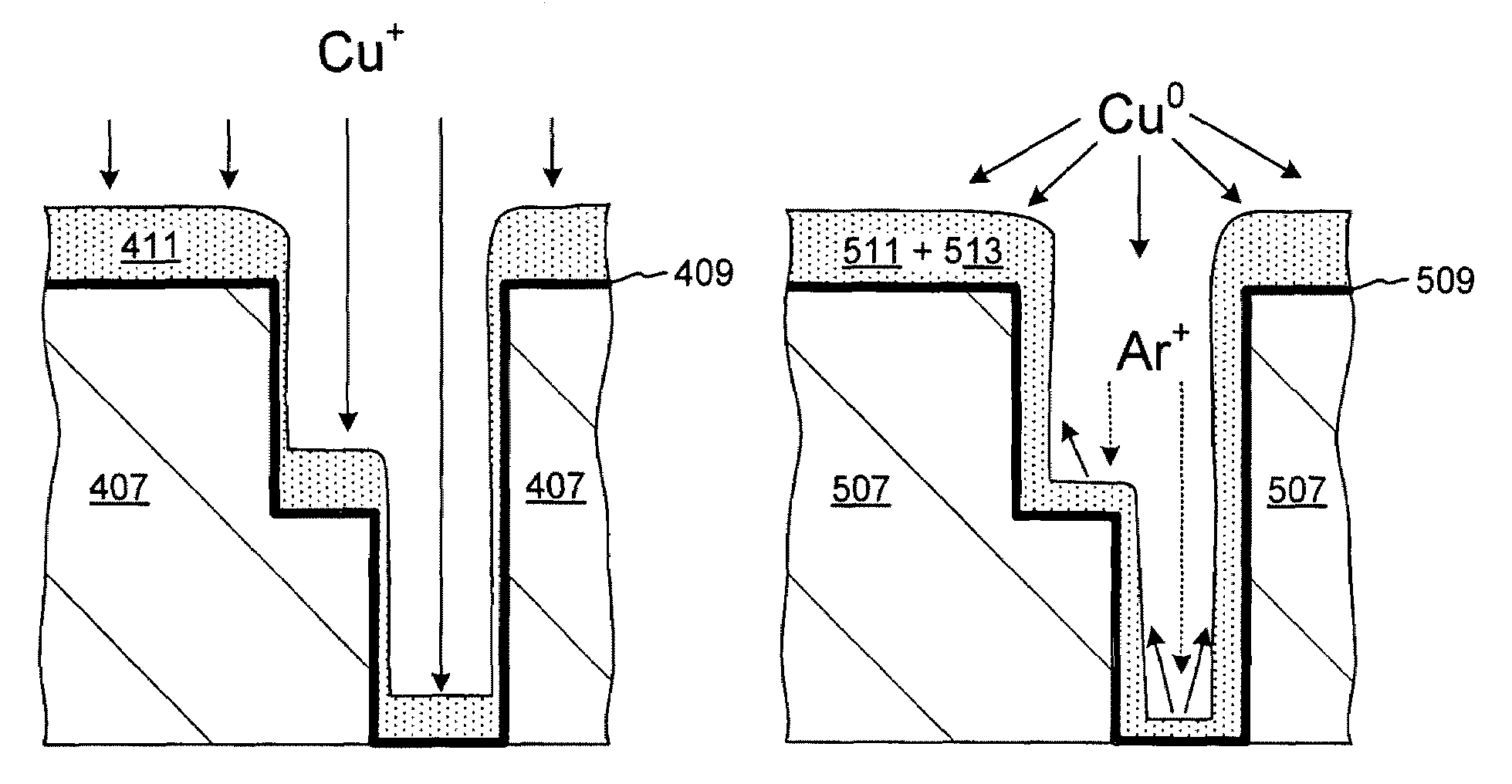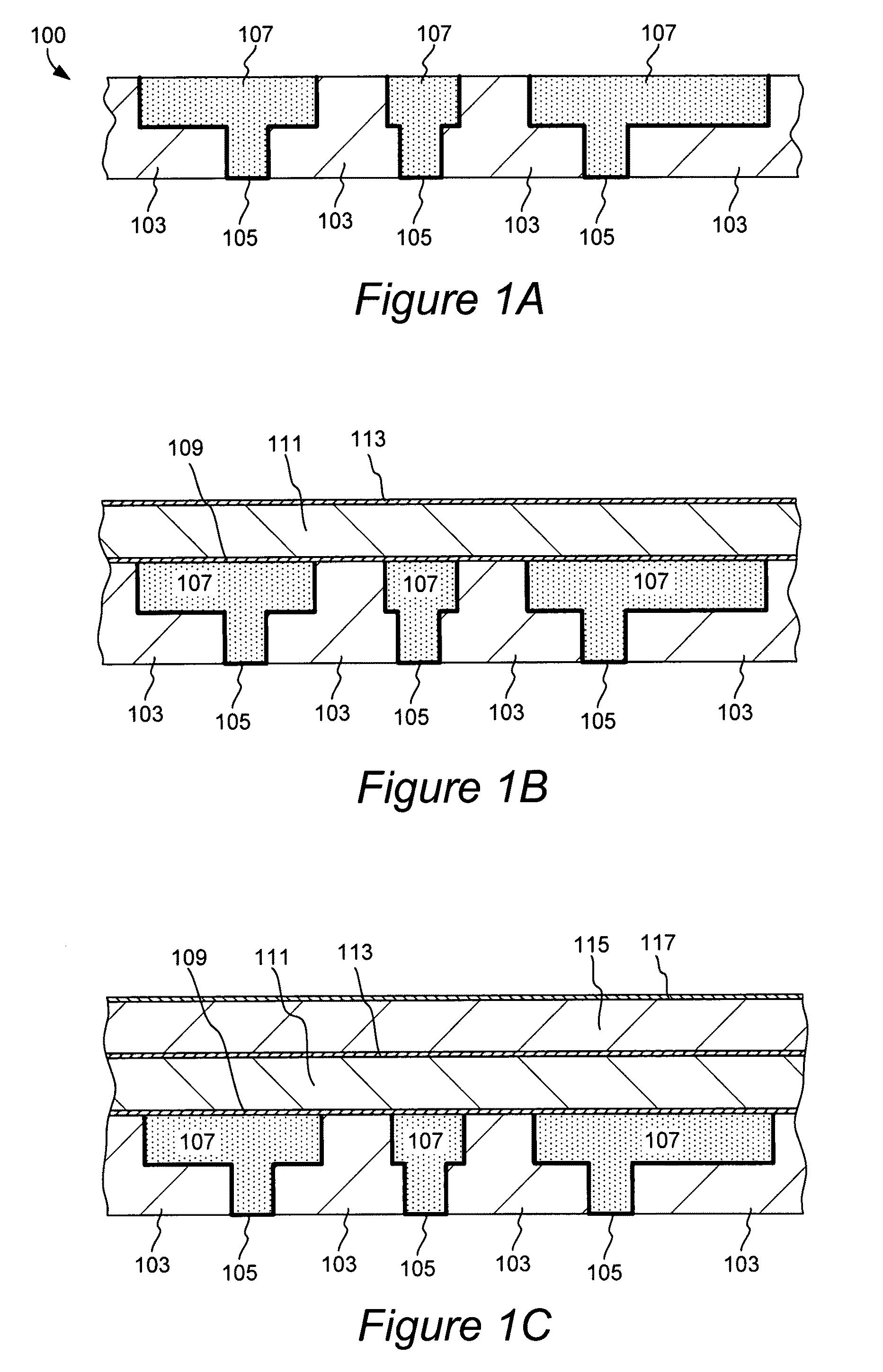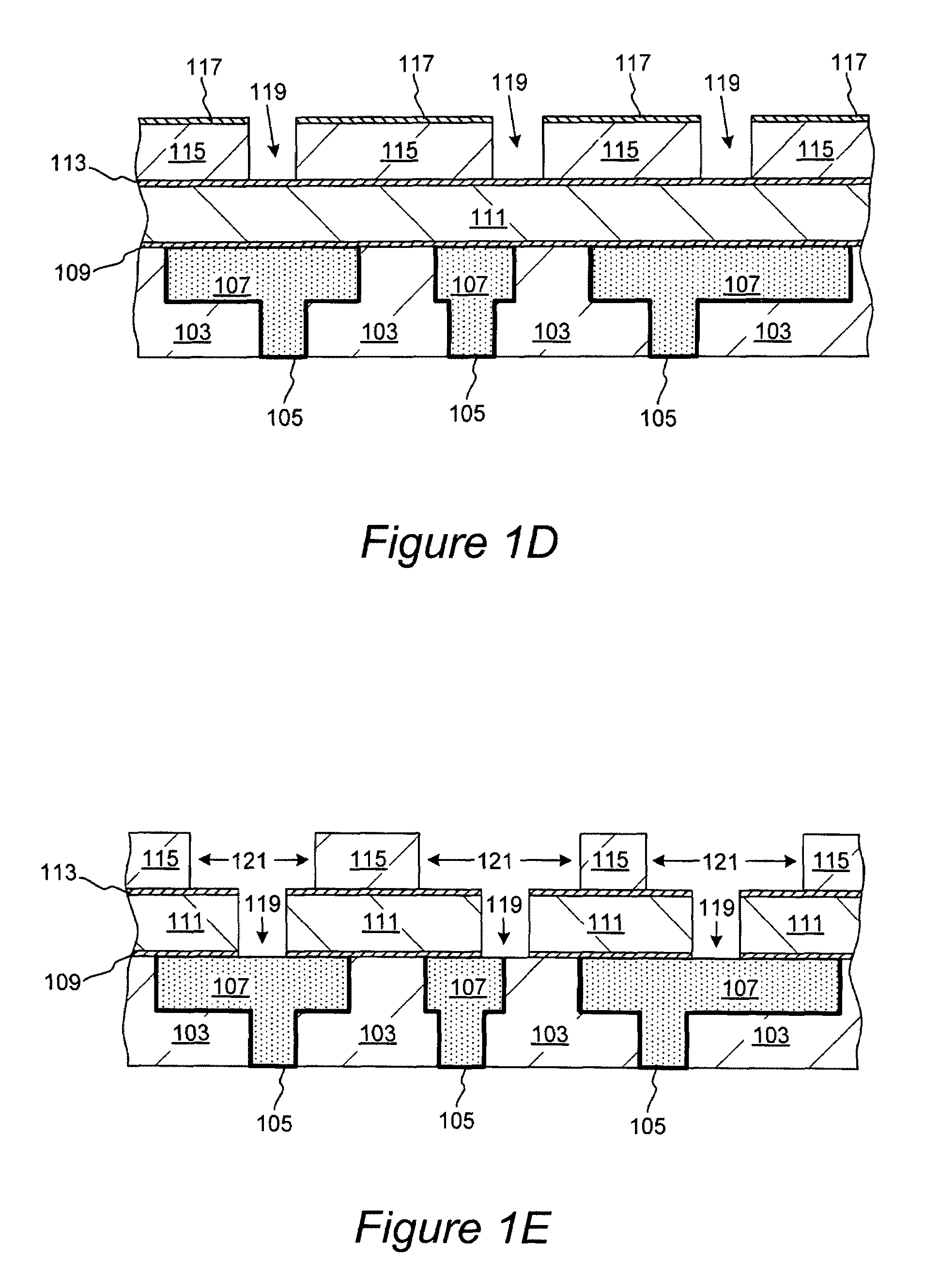Multistep method of depositing metal seed layers
- Summary
- Abstract
- Description
- Claims
- Application Information
AI Technical Summary
Benefits of technology
Problems solved by technology
Method used
Image
Examples
examples
[0096]The methods of present invention have been evaluated experimentally. FIG. 7A presents an experimental plot that illustrates probability of device having a particular via chain resistance for devices fabricated using three different seed layer formation methods. Curve (a) illustrates the devices, fabricated using a deposition-resputter-deposition seed layer formation sequence provided by methods described herein. Curve (b) corresponds to devices fabricated using a deposition-resputter two-step seed layer formation method, and curve (c) corresponds to devices fabricated using a one-step deposition only method.
[0097]It can be seen that parametric performance of devices fabricated using deposition / resputter / deposition method, illustrated by curve (a), is superior to the performance of devices fabricated using other methods. Thus, only minor variation in via chain resistance is observed in the devices illustrated by curve (a). At the same time, the probability of device formation w...
PUM
| Property | Measurement | Unit |
|---|---|---|
| Fraction | aaaaa | aaaaa |
| Fraction | aaaaa | aaaaa |
| Fraction | aaaaa | aaaaa |
Abstract
Description
Claims
Application Information
 Login to View More
Login to View More - R&D
- Intellectual Property
- Life Sciences
- Materials
- Tech Scout
- Unparalleled Data Quality
- Higher Quality Content
- 60% Fewer Hallucinations
Browse by: Latest US Patents, China's latest patents, Technical Efficacy Thesaurus, Application Domain, Technology Topic, Popular Technical Reports.
© 2025 PatSnap. All rights reserved.Legal|Privacy policy|Modern Slavery Act Transparency Statement|Sitemap|About US| Contact US: help@patsnap.com



